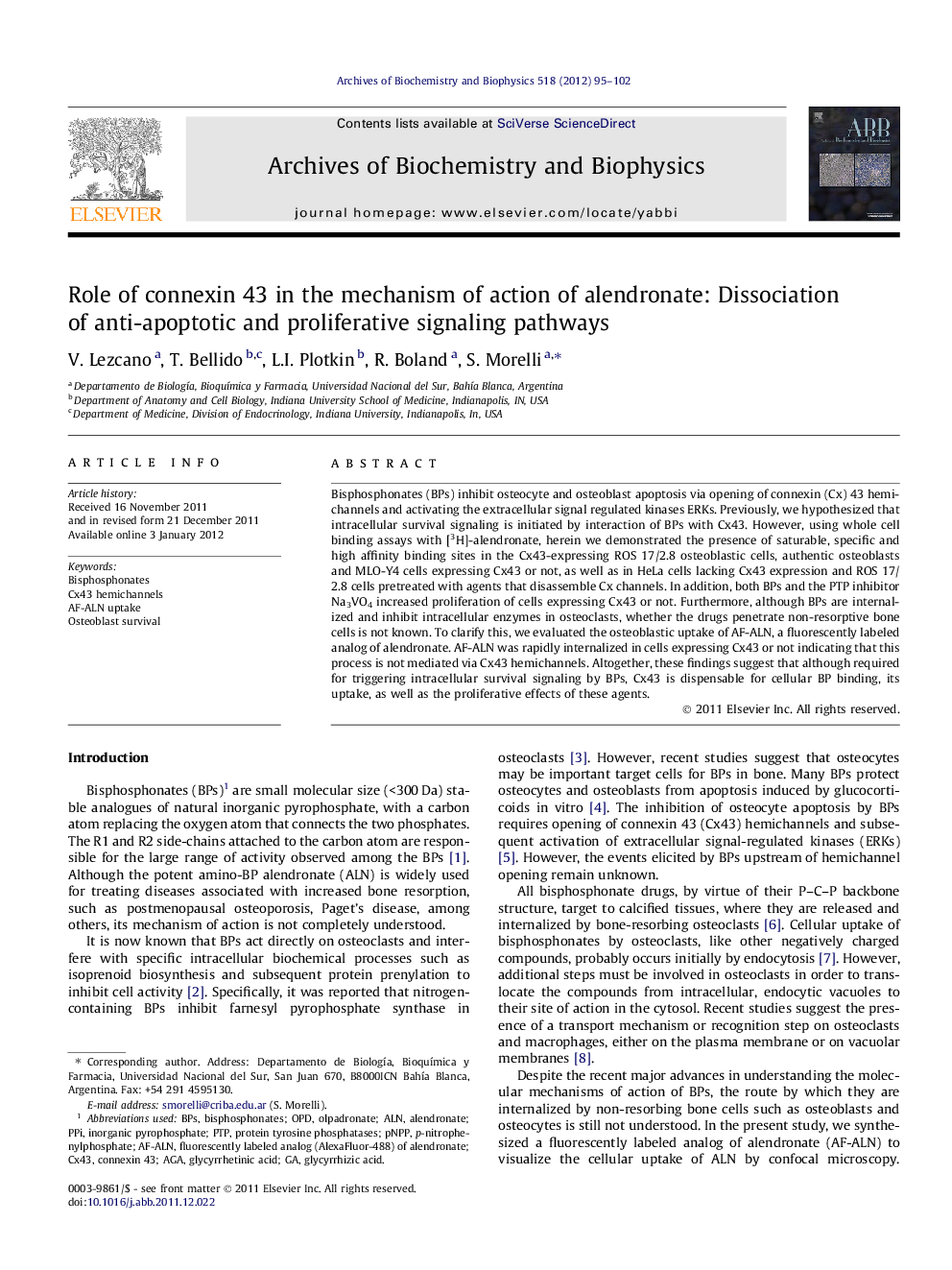| Article ID | Journal | Published Year | Pages | File Type |
|---|---|---|---|---|
| 1925627 | Archives of Biochemistry and Biophysics | 2012 | 8 Pages |
Bisphosphonates (BPs) inhibit osteocyte and osteoblast apoptosis via opening of connexin (Cx) 43 hemichannels and activating the extracellular signal regulated kinases ERKs. Previously, we hypothesized that intracellular survival signaling is initiated by interaction of BPs with Cx43. However, using whole cell binding assays with [3H]-alendronate, herein we demonstrated the presence of saturable, specific and high affinity binding sites in the Cx43-expressing ROS 17/2.8 osteoblastic cells, authentic osteoblasts and MLO-Y4 cells expressing Cx43 or not, as well as in HeLa cells lacking Cx43 expression and ROS 17/2.8 cells pretreated with agents that disassemble Cx channels. In addition, both BPs and the PTP inhibitor Na3VO4 increased proliferation of cells expressing Cx43 or not. Furthermore, although BPs are internalized and inhibit intracellular enzymes in osteoclasts, whether the drugs penetrate non-resorptive bone cells is not known. To clarify this, we evaluated the osteoblastic uptake of AF-ALN, a fluorescently labeled analog of alendronate. AF-ALN was rapidly internalized in cells expressing Cx43 or not indicating that this process is not mediated via Cx43 hemichannels. Altogether, these findings suggest that although required for triggering intracellular survival signaling by BPs, Cx43 is dispensable for cellular BP binding, its uptake, as well as the proliferative effects of these agents.
► Alendronate cellular specific binding does not depend on Cx43 expression. ► Non-resorbing bone cells are able to incorporate bisphosphonate from the medium. ► Alendronate cellular uptake is not mediated via Cx43 hemichannels. ► Cx43 is required for prevention of apoptosis by ALN in osteoblasts and osteocytes.
